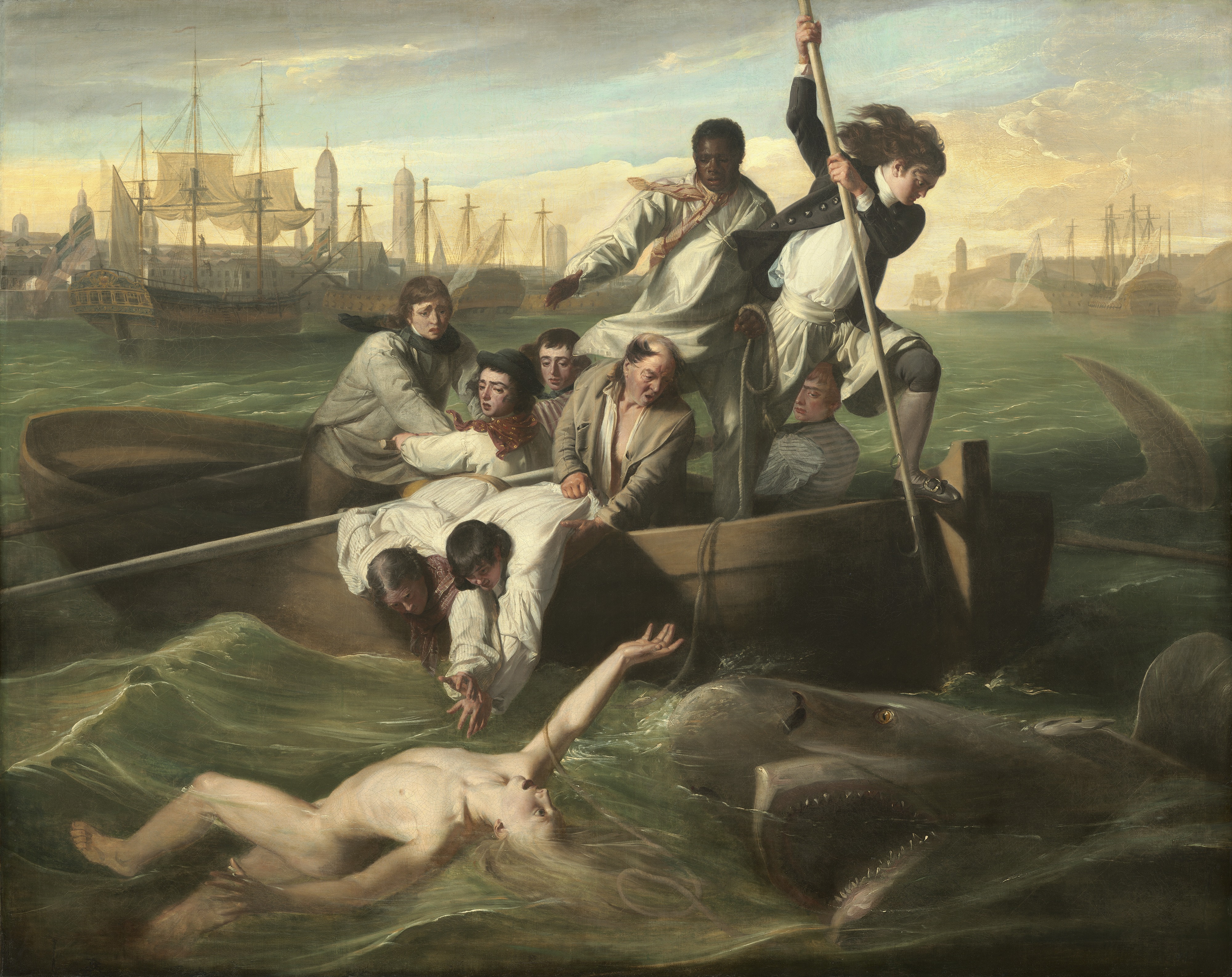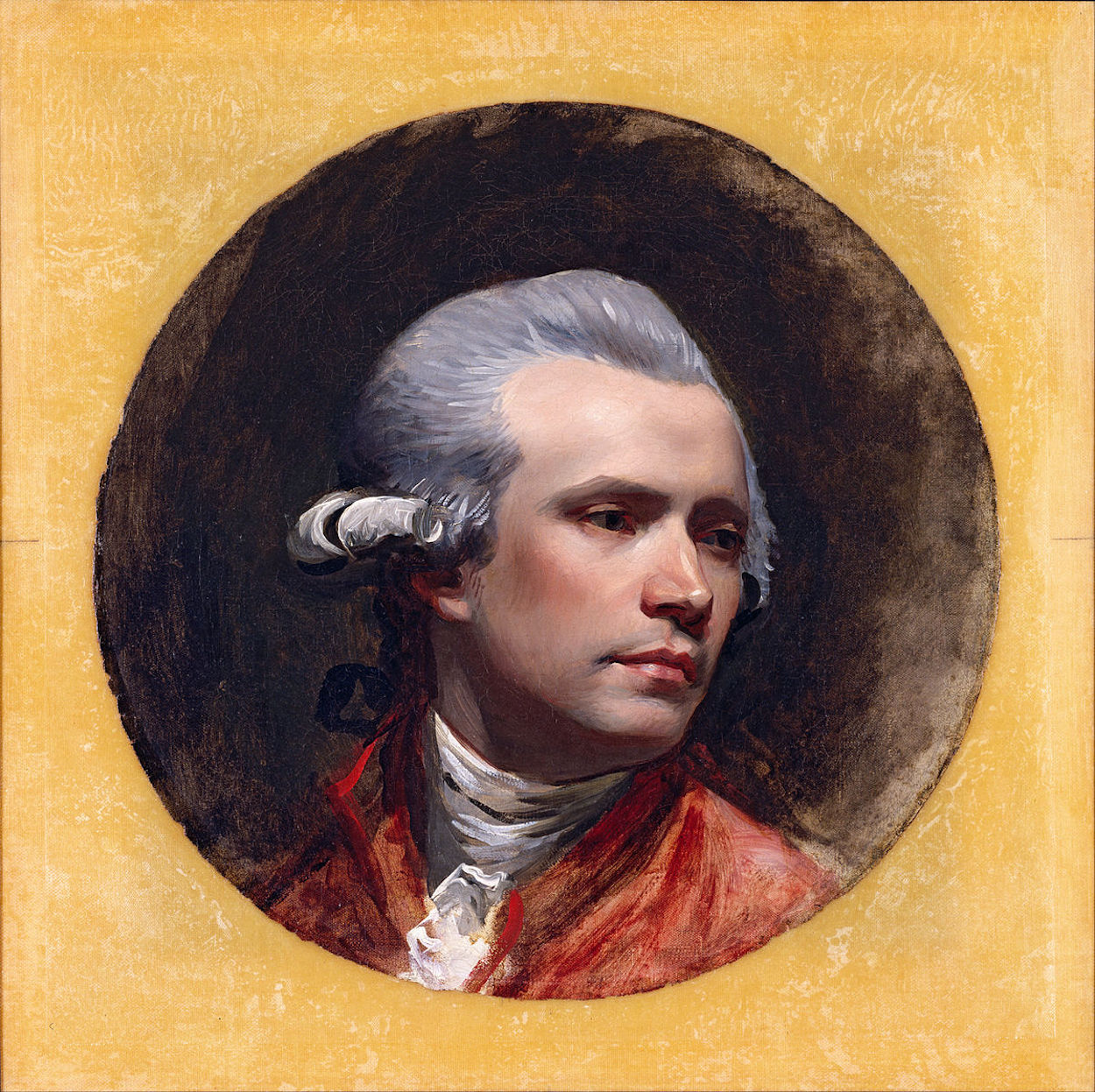A painting that tells a story is fascinating, but when the story is true, it becomes even more compelling. The setting for this dramatic piece is the waters of Havana harbor. Brook Watson, a fourteen-year-old orphan deckhand, has decided to go for a swim. Suddenly, he is attacked by a tiger shark. As he cries for help and his crewmates race to his rescue, the shark lunges a second time, again pulling the boy under water and this time tearing off a piece of his leg. Frantically, the sailors try to pull Watson, ghostly-white, naked, and helpless, with blood streaming from his right leg, from the churning waters. The shark, jaws agape, approaches for a third strike while the sailor at the stern prepares to spear the monster with a harpoon. What will happen next? How does the story end?
Thankfully, Watson survived the ordeal although his leg had to be amputated below the knee. Some thirty years later, when he was a prosperous merchant in London, Watson commissioned American artist John Singleton Copley to capture this horrific incident. Copley, born in Boston, had moved to England to further his artistic ambitions. A successful portrait painter in the colonies for over a decade, he yearned to paint a scene of historical significance. But this, his first historical painting, was unique in that it did not feature prominent characters from mythology or antiquity. Yet, it appealed to both art critics and "commoners" and made a lasting impression in the art world.
Besides its significance in the genre of historical art, this painting has helped propagate the myth of all sharks as man-eating monsters. Interestingly, it is unlikely that Copley had ever seen a shark as his rendering of the creature with lips, front-facing, mammal-like eyes, and strangely-shaped fins is faulty. Nevertheless, the powerful drama of the moment (heightened by the nearly vertical harpoon slicing through the horizontal elements of Watson, the shark, the boat, and Havana harbor) and the wide range of emotions seen on the crew (fear, compassion, anger) more than compensate for those inaccuracies. The monumental size of the painting (6ft by 7.5ft) adds to its visual intensity. Upon Watson's death, the painting was bequeathed to Christ's Hospital as a beacon of hope and encouragement for youth in the face of adversity.
~Martina
We need your help - we need $20,000 to create the new version of DailyArt for Android devices. Find out more here. Thank you!


 John Singleton Copley
John Singleton Copley